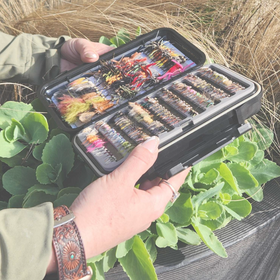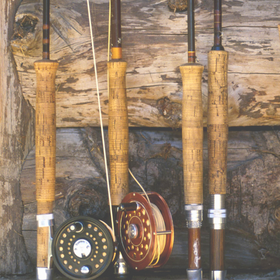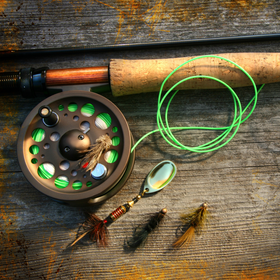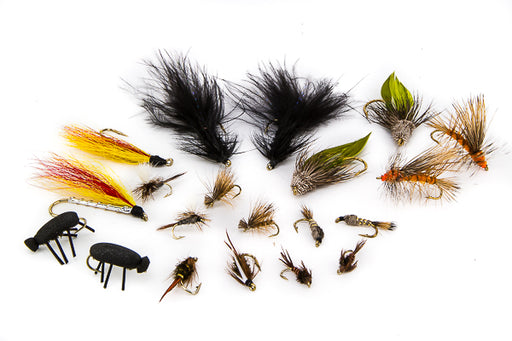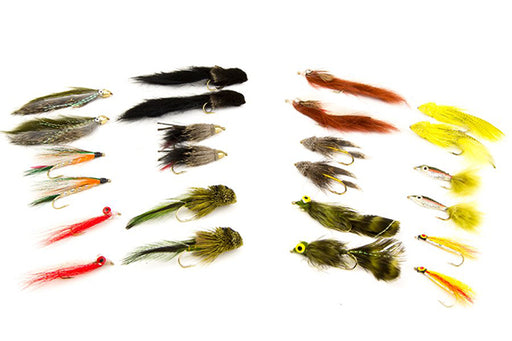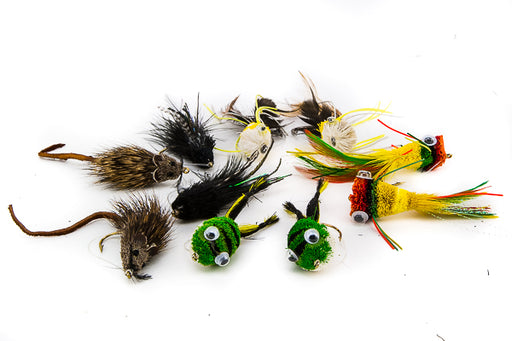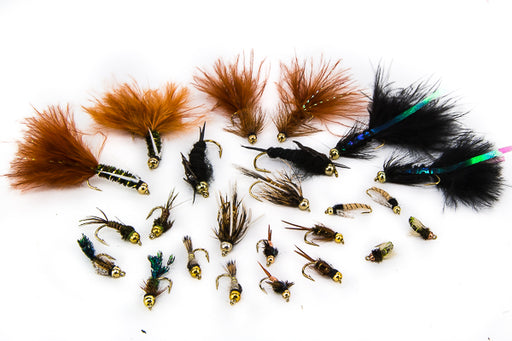
Christmas Island Ultimate Gear List
Christmas Island Prep & Thoughts From Our First Trip
Christmas Island can feel intimidating. For a lot of fly anglers, it’s the farthest and most remote place they’ll ever travel to, and for many, it might be the only trip like this they ever take. It’s a gateway into “extreme” travel, and there’s a lot to plan for—especially if it’s your first time doing something this big.
Most of what follows should still be helpful when preparing for your own CXI adventure.
Packing for Travel
Most folks end up checking a bag. You could do this trip without one, but you’d be rolling the dice with no backup gear and no room for gifts—an important part of this trip. The island is extremely poor, and simple items like school supplies, soccer balls, or shoes make a huge difference. Playing soccer with the local kids was one of the highlights of our week.
Clothing
Sunset Horizon does offer laundry service for a fee. Realistically, two sets of fishing clothes, two sets of lounging clothes, and a clean outfit for travel day is plenty—plus a packable rain jacket.

Flats Pants
I’ve worn flats pants and I’ve worn shorts with leggings. Neither is better or worse. Flats pants drag slightly in the water, which is why people switch to shorts/leggings, but the difference is tiny and doesn’t affect how worn out you feel. Shorts with leggings do look a little funny though… so that’s your trade-off.
Shirts
I love a good sun hoody. I also like a collared shirt with pockets. Collared shirts make it easy to stash a fly box or tippet without digging through a pack, but the sun protection of a hoody is hard to beat. I usually end up wearing the hoody.
Gloves
Sun gloves were a last-minute idea for me. I’d always hated bulky cold-weather gloves and assumed all gloves would feel that way. Not true. Sun gloves are amazing, and I was glad to avoid fried hands. I’ll never fish the tropics without them again.
“Funny Hat”
I grabbed my wife’s wide-brim gardening hat at the last second. Total game changer. The equatorial sun is unrelenting, and baseball hats just don’t cut it. The extra shade made a world of difference in comfort and visibility.
Buff
Don’t forget a Buff (neck gaiter). Even with a hat, I burn. I wore mine over my nose, mouth, and ears almost nonstop… and still managed a burn or two.
Boots
You need solid wading boots with rubber soles. They don’t have to be special “saltwater” boots—color and non-marking soles are the main differences. BOA systems and Korkers interchangeable soles don’t hold up well on the island. Bring real boots.
Socks
Neoprene wading socks make boots tolerable. Without them, the boots feel huge, stiff, and blister-prone. Bring neoprene socks plus cushy hiking socks for underneath.
Sunglasses
The surprise MVPs of the trip were yellow low-light lenses. Costa Sunrise Mirror and Smith Ignitor were incredible, especially on cloudy days. They helped us see bonefish way better when the light was low. I’ll bring two pairs again—and might start the day in yellow lenses more often.
Fishing Gear
Rods / Reels / Lines
On my first trip, I brought way too much. As the host, I felt responsible for having backups for everyone. Our group was careful and came well-prepared, so almost nothing broke. I carried setups that never left the boat.
Here’s what I’ll bring next time:
-
8wt setup: The everyday bonefish rod. Also handles triggerfish—I caught most of my triggers while bonefishing.
-
9wt setup: A backup for the 8wt. Great for wind or when starting the day targeting triggers. I used my 9wt (Sage R8 Salt) more than the 8wt.
-
10wt setup: Blind-casting GT rod + backup triggerfish rod.
-
11wt or 12wt setup: Nice for dedicated GT days, but optional if you’re not planning on spending serious time chasing them.
I bent my 10wt as far as it could bend on one fish. A 12wt probably would’ve finished the job. But that’s how it goes—you rarely get time to switch rods. Seeing a GT and deciding to change rods is like deciding to put on your seatbelt mid-rollover.

Tippet
You won’t need anything lighter than 12lb.
-
Bonefish: 16–20lb fluoro
-
Triggerfish: 20–25lb fluoro
-
GT: 100lb mono (I used RIO GT Mono; one fish still managed to break me off.)
One tapered leader per reel for the week is plenty. I used a tapered leader only on my 8wt. Everything else was straight fluoro and mono.
Lines
Floating tropical lines all week long.
Bring a spare for the bonefish rod and maybe one for the 10wt. Coral eats fly lines for breakfast.
Flies & Boxes
I like two boxes of bonefish/trigger flies:
-
Lightly weighted (mostly bead-chain)
-
Heavier (lead/brass eyes)
Plus one small GT box with ~6 flies. I brought an extra “backup” box in case I lost something, but didn’t need it.
Packs
Lots of opinions here. I bring a waterproof backpack for the boat—snacks, extra lines, spare reel, etc.
On the flats, a backpack is too bulky for me. I prefer a waterproof sling or lumbar pack with just the basics:
- fly boxes
- water
- tippet
- small packable rain jacket
- tools
Anything more turns into chaos when you need something quickly. Fishpond packs are overwhelmingly more popular than the Simms or Orvis packs, and I can see why. They are rock-sturdy and very intuitive.
Other Items
Spare Rod Carrier
The O'Pros spare rod holder was the only one that truly impressed us. Guides can carry your extra rod if you’re nearby, but as the host, I was often on my own. I’ll buy one before the next trip.

Bugs, Rats & Critters
A couple evenings brought out biting bugs, plus the occasional rat or cockroach. Thermacell units were helpful but maybe not essential. Most bites happened around the communal table after dinner.
Water Filter
I wish I’d brought one. The lodge’s new filtration system had already broken before we arrived. We lived on boiled tap water and bottled water that sometimes tasted… interesting. A small filter would’ve made evenings and mornings easier.
Tying Kit
We tied way too many flies before the trip, but mid-week we learned triggers wanted big bonefish bitters—and we didn’t have many. Craig tied a few hot flies that saved the day. You don’t need a tying kit, but you might be glad you brought it.
First Aid Kit
A basic first aid kit was used a few times, plus a few extras:
- Cloth tape: Saves your stripping finger from chafing.
- Pepto chewables: Nobody had stomach issues, but many of us took some on day one just in case. It's very effective at treating "travelers diarrhea"
- Antibiotics: This was huge. A doctor in our group brought prescriptions for skin and respiratory infections. One guest used doxycycline immediately when he got an infection—and avoided what could’ve been a serious evacuation situation.
I came home with a MRSA infection that exploded two days after we returned. Had this happened on the island without a doctor, things could’ve ended very differently. If possible, see your doctor, get a couple of appropriate prescriptions, and learn how to identify early signs of trouble.
Global Rescue
This service will fly a plane to CXI to pick you up and get you to a doctor. Sure, your trip is over, but you're alive. For the $200, it is nice to have in your pocket.
Lotion & Sunscreen
I brought reef-safe SPF 70, and zinc for my nose. I still got burned twice. A puck of O'Keefe's Working Hands was very useful to relieve the burn and the dry skin from windy, salty air.
Alcohol
I’m not much of a drinker, but a little tequila tastes awfully good after a long tropical day. I found a small shop with a few bottles of wine on the island, but stocking up at the Honolulu duty-free is a better plan.
Positive Attitude
This is important. You’re as far from help as you’re ever likely to be, and you only have what you brought. Most people get one shot at a trip like this. Even a little negativity can ripple through a group quickly.
Every day, decide:
Today is a top-ten day.
Say it, share it, and watch the mood change.
Even if it rains all day and you never see a fish—you’re still doing something unbelievable. If you had told your childhood self you’d someday travel to one of the farthest corners of the world to chase fish with a fly rod, you wouldn’t have believed it.
Very few anglers ever make it here. You worked hard to take this trip. Let that effort make every single day feel like one of the best of your life.


